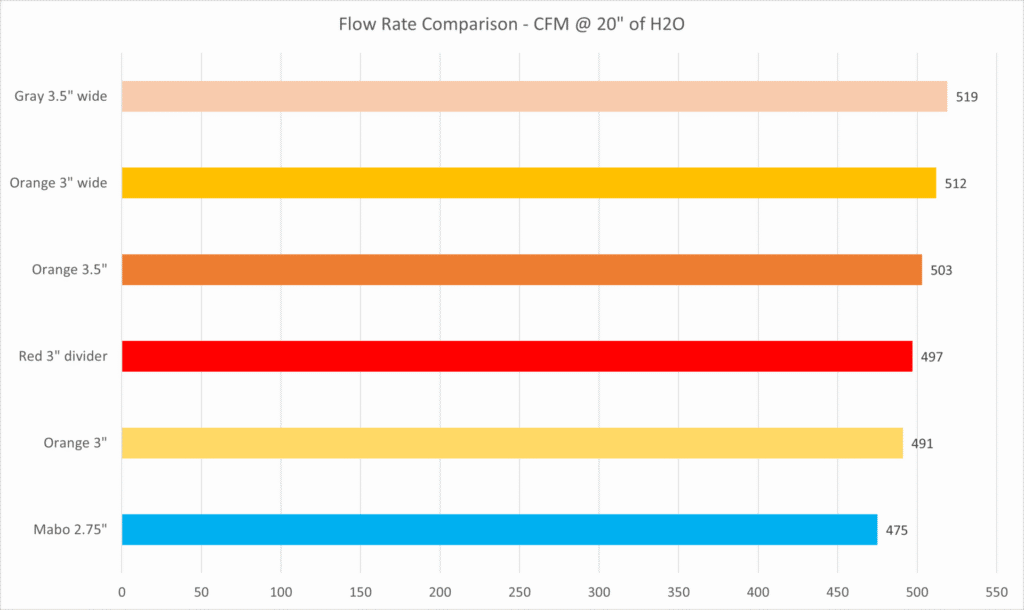Background:
As the tuning process for the Mabotech M520 turbo currently installed in the GTI approaches completion, I’ve started considering larger turbos that will support airflow testing.
One candidate is the Mabotech M600 turbo, shown below.
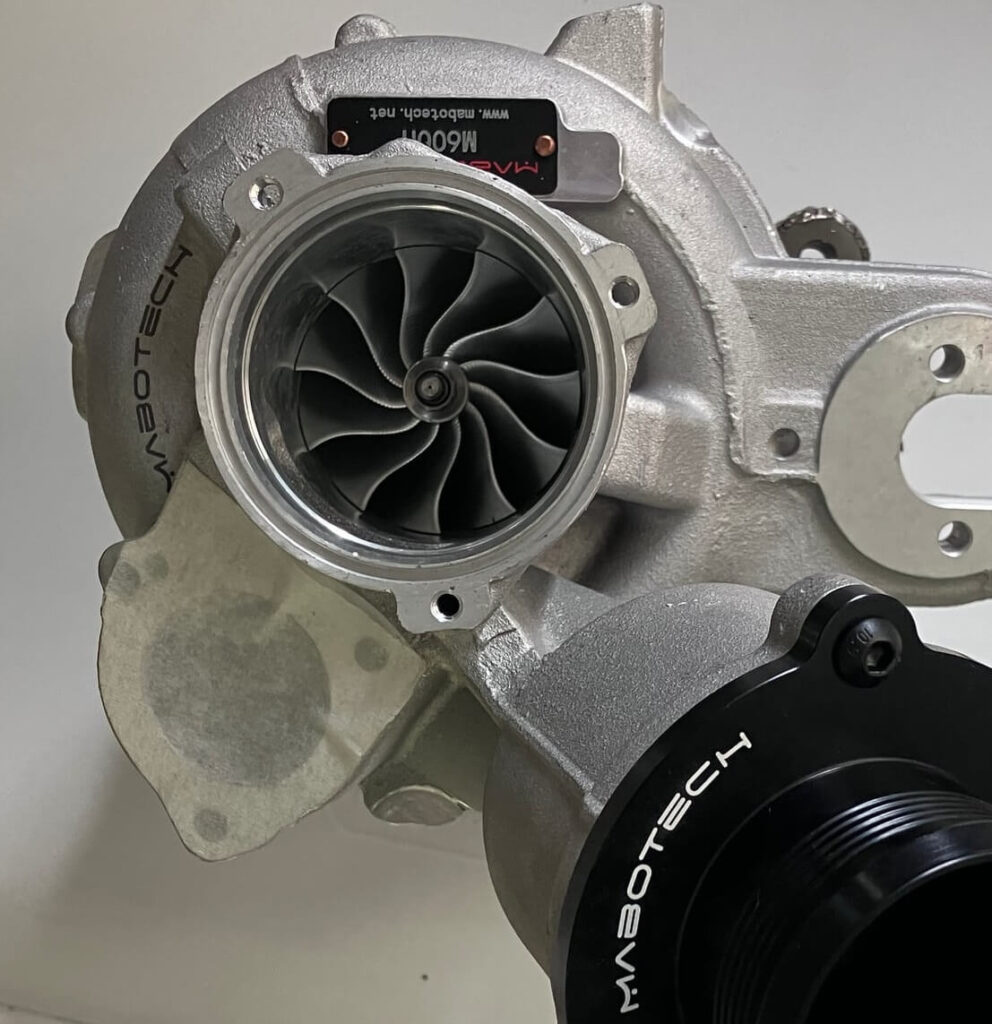
The M600 has a 60 mm compressor inlet, so I created a flow bench adapter to simulate the inlet to the compressor on the M600 and recently conducted some flow tests with it.
In addition to testing with the Mabotech inlet elbow, a few designs I’ve made were added to the mix for testing.
Inlet elbow flow tests:
First is the Mabotech inlet elbow that works with the stock accordion – Mabo 2.75″.
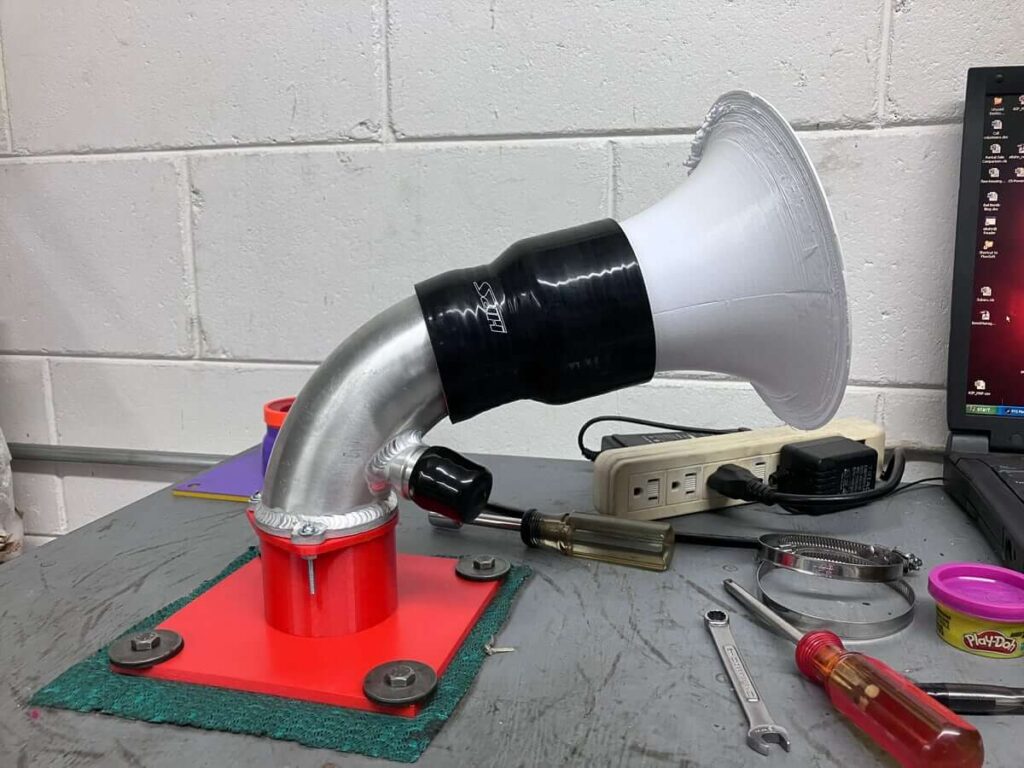
Then, a 3″ inlet design I created – Orange 3″.
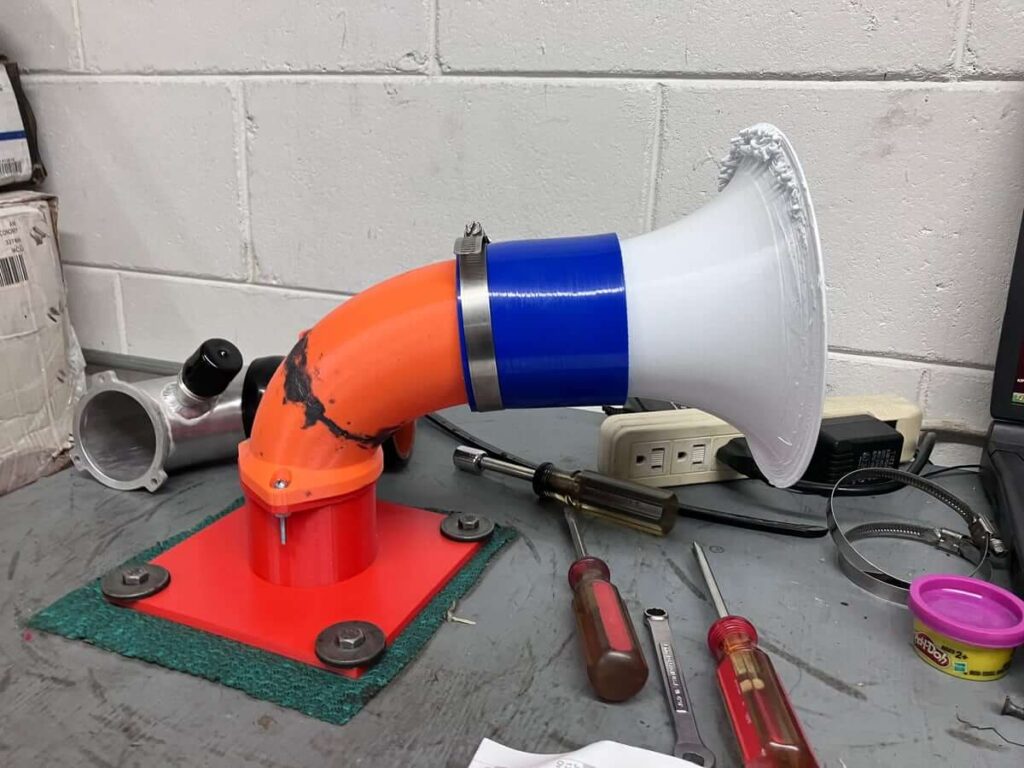
Next is a 3″ inlet with a divider – Red 3″ divider.
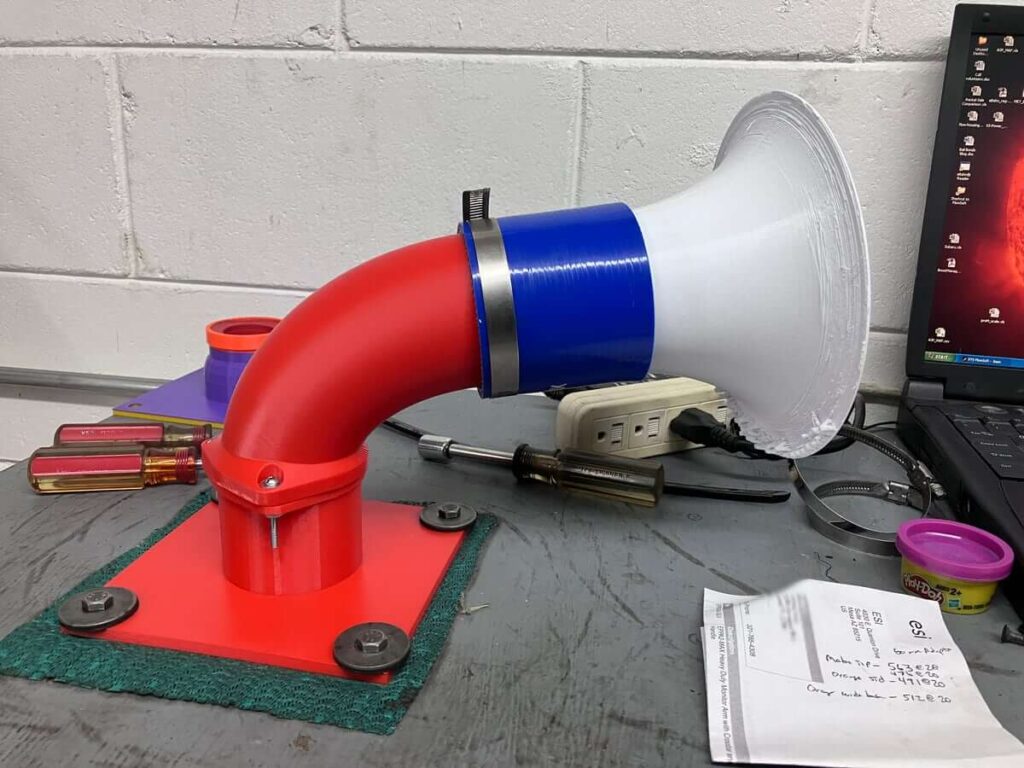
Then a 3″ inlet with a wider outlet – Orange 3″ wide

Finally, a 3.5″ inlet to 60 mm outlet – Orange 3.5″.
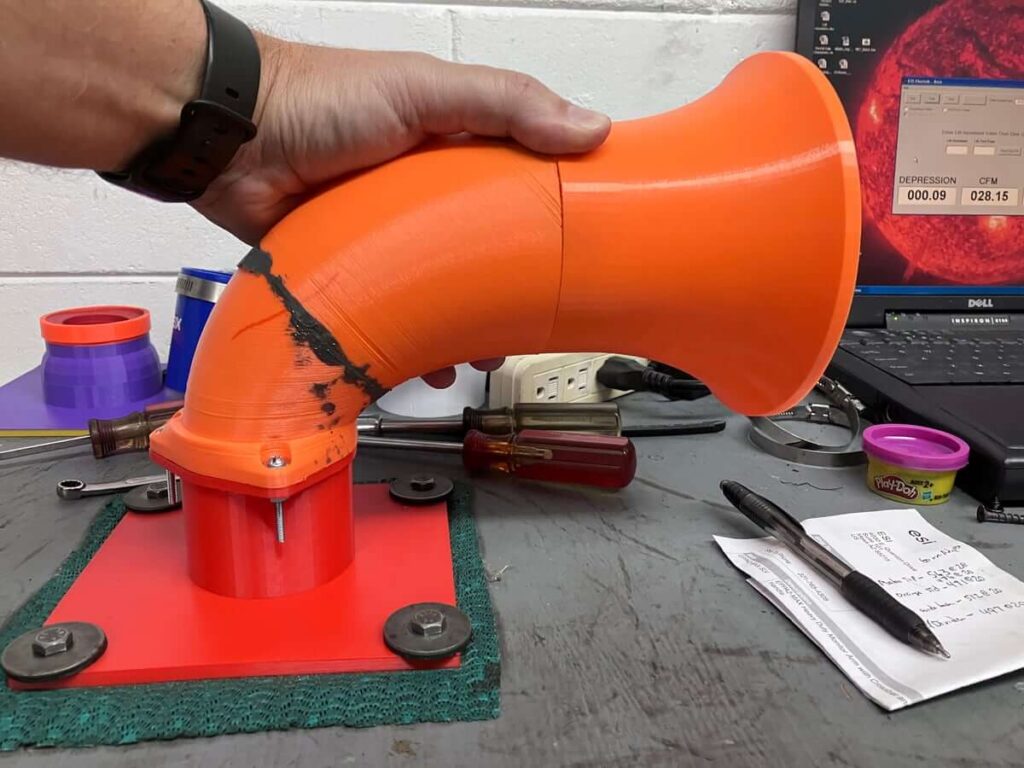
Elbow test results:
The results of the testing are shown in the chart:
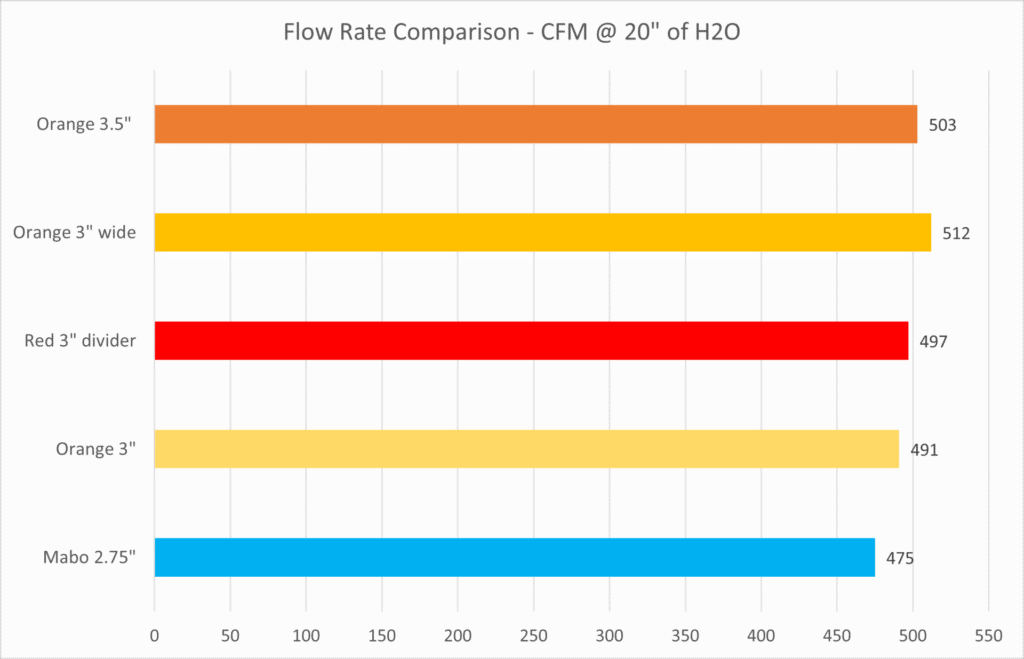
One test case was repeated using the adapter that simulates the Mabotech M520 compressor inlet. The M520 has a 60 mm opening and a velocity stack that reduces the inlet diameter to 56 mm.
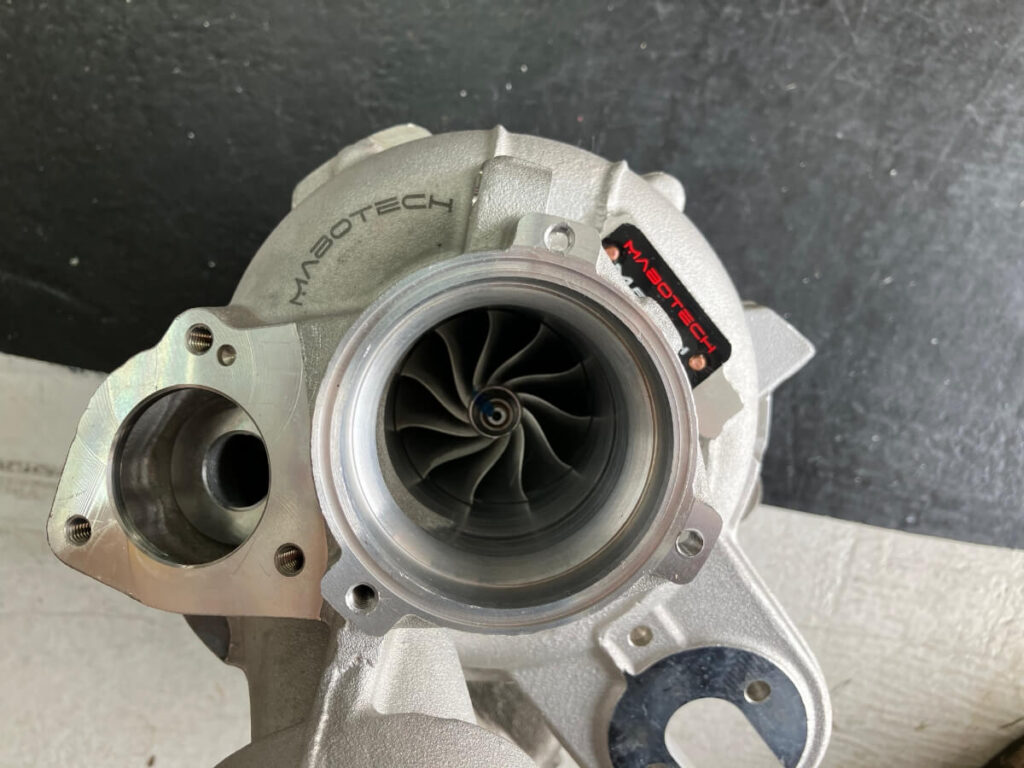
The 3″ inlet elbow with the wide base had the highest flow rate using the 60 mm adapter, 512 CFM.
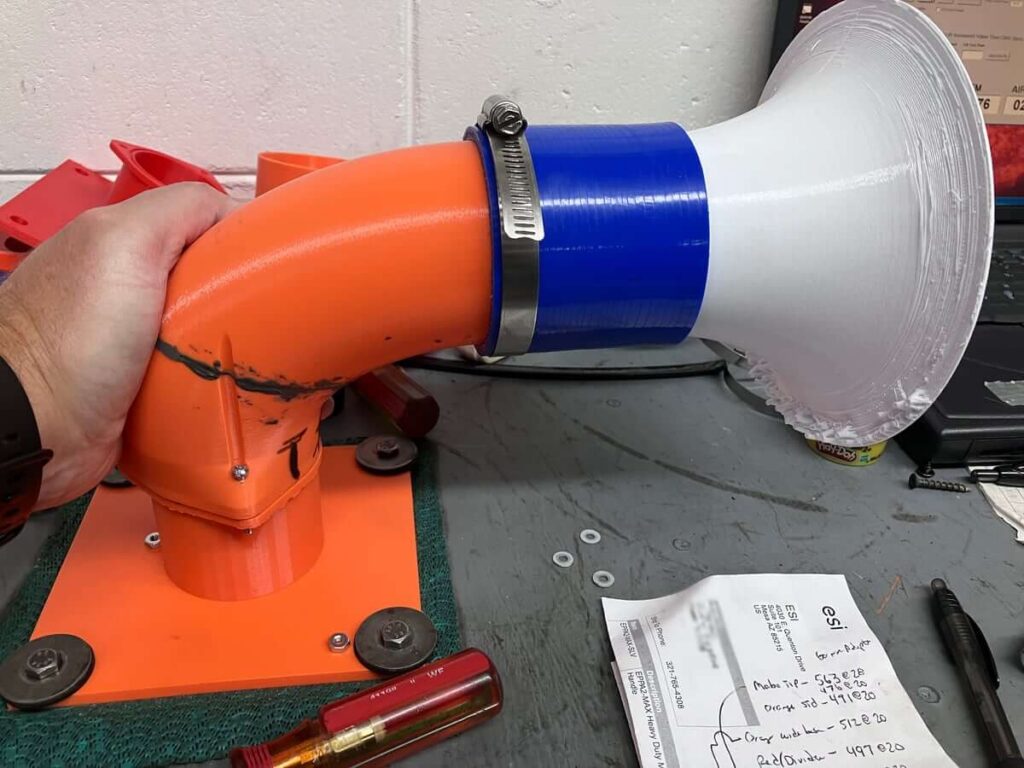
The 56 mm adapter decreased the flow rate to 395 CFM @ 20″ of H2O.
Since the inlet is narrower, a drop in airflow rate was expected. A 23% decrease was larger than expected, indicating the substantial contribution the compressor housing makes to the maximum flow rate.
Intake Testing:
The 60 mm compressor inlet is the same size as Brett Harrison used in the infamous “Blaze is at least 50% higher flowing” comparison to Racingline’s R600.
An erroneous conclusion that Blaze Performance capitalized on to mislead consumers about its ATOM Race intake.

With a 60 mm inlet, Racingline R600 intake, and Blaze Performance ATOM Race intake on hand, this was a good opportunity to recreate the comparison to see what caused the difference (Hint: It wasn’t the intakes.)
First up is the Racingline R600 intake using a cotton Racingline filter with the Racingline filter sock. The intake is attached to the 60 mm adapter using a do88 3″ inlet hose and the 3″ Orange wide elbow.
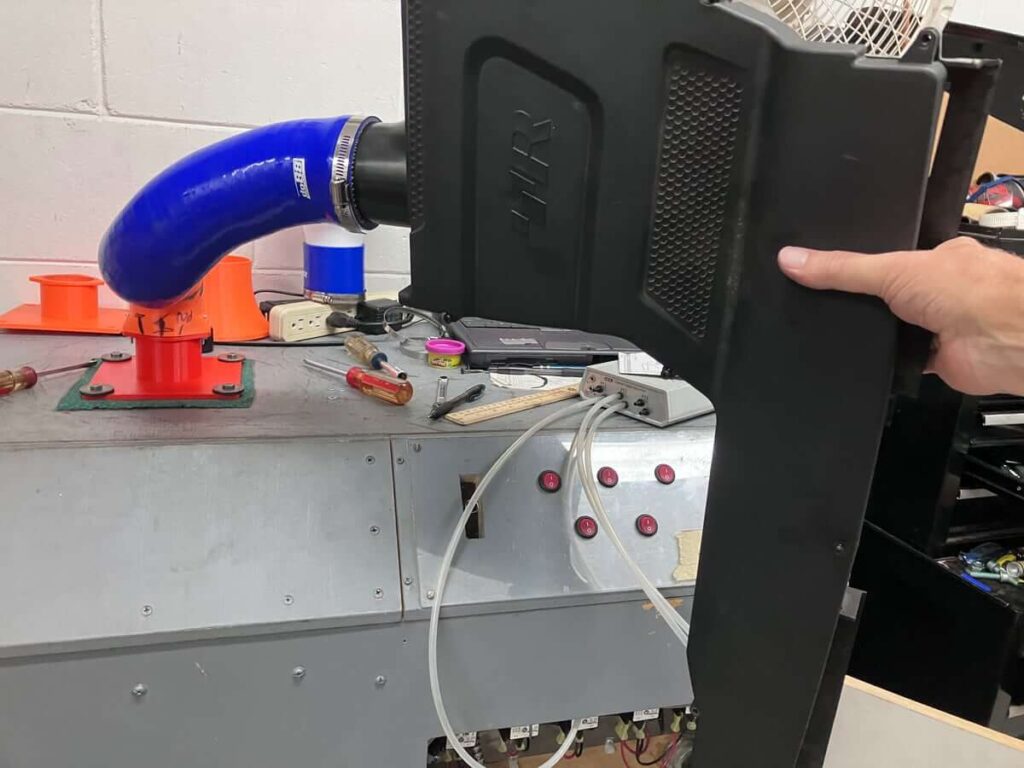
The Racingline intake flows 536 CFM @ 28″ of H2O.
In the Brett Harrison comparison, Brett had performed major surgery on the Blaze Performance inlet flange, increasing the inside diameter from 56 mm to 60 mm.
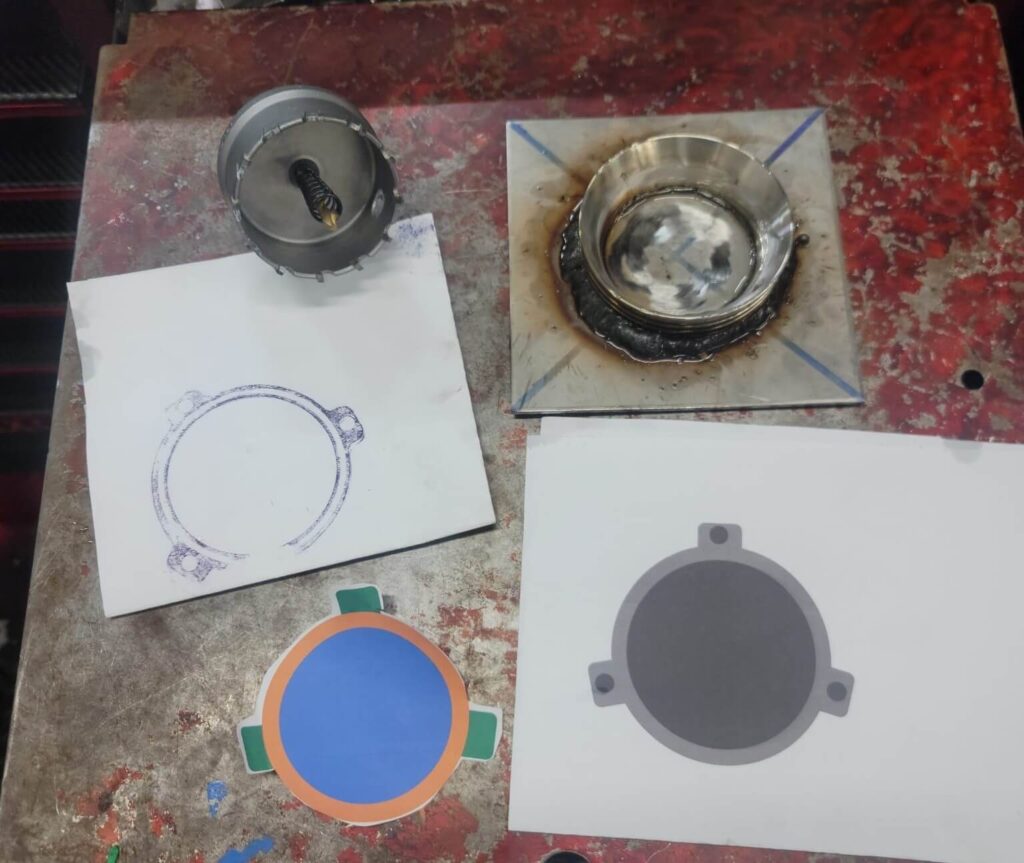
I wasn’t about to ruin my Blaze inlet flange, so I made an adapter to replace the Blaze 56 mm flange and increased the opening to 60 mm.
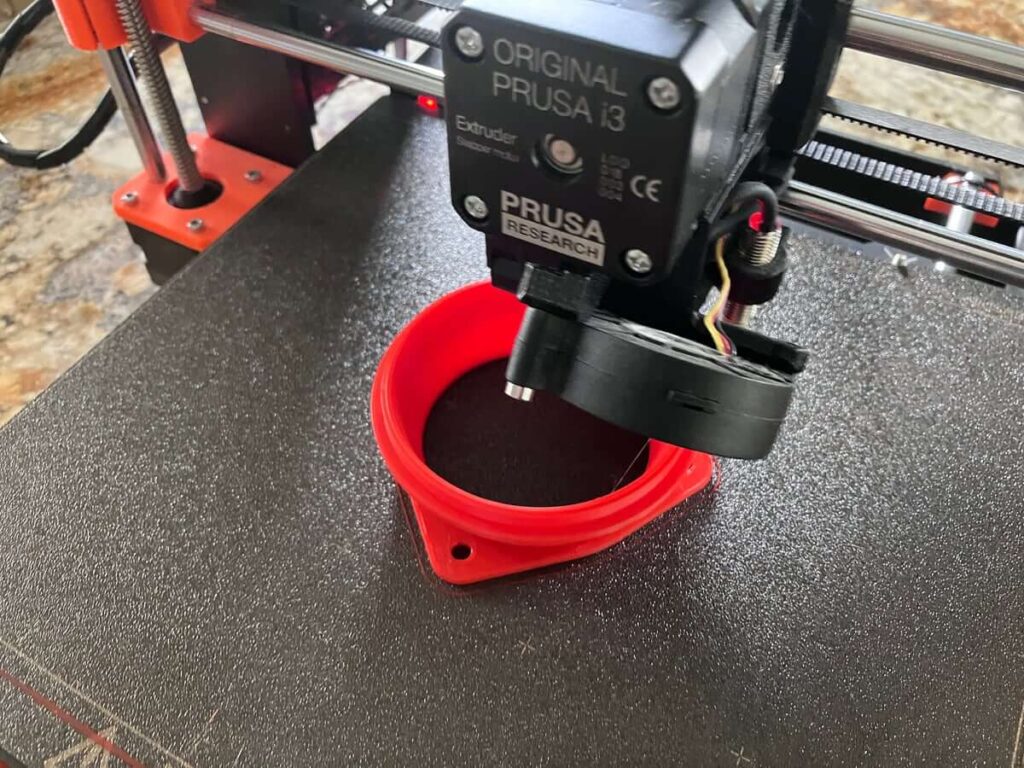
The new Blaze adapter will fit cleanly onto the 60 mm compressor inlet adapter.
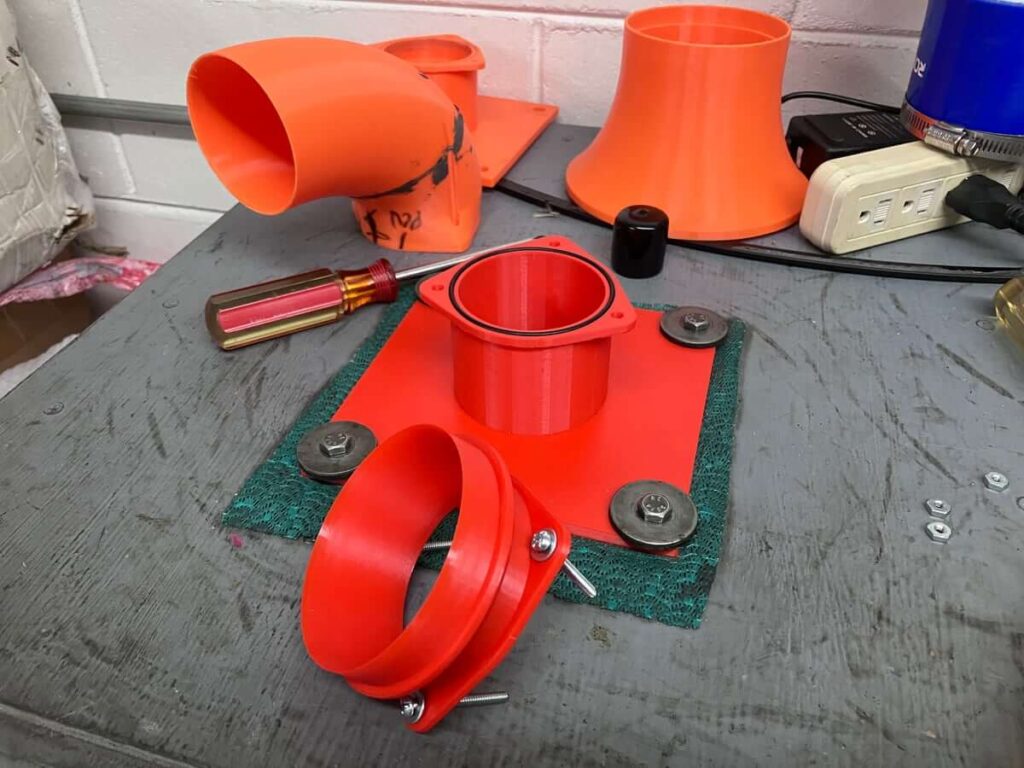
With the inlet flange and adapter ready, the next step was assembling the Blaze Performance intake.
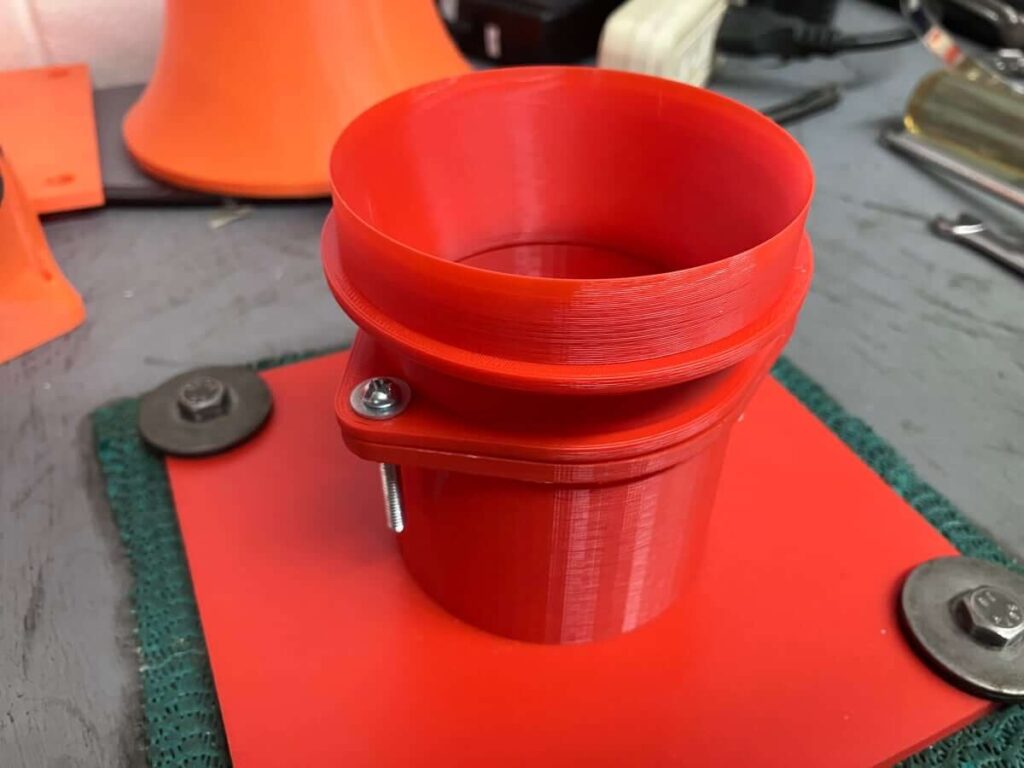
The Blaze intake is assembled, and the silicone inlet hose is attached to the 60 mm turbo flange.
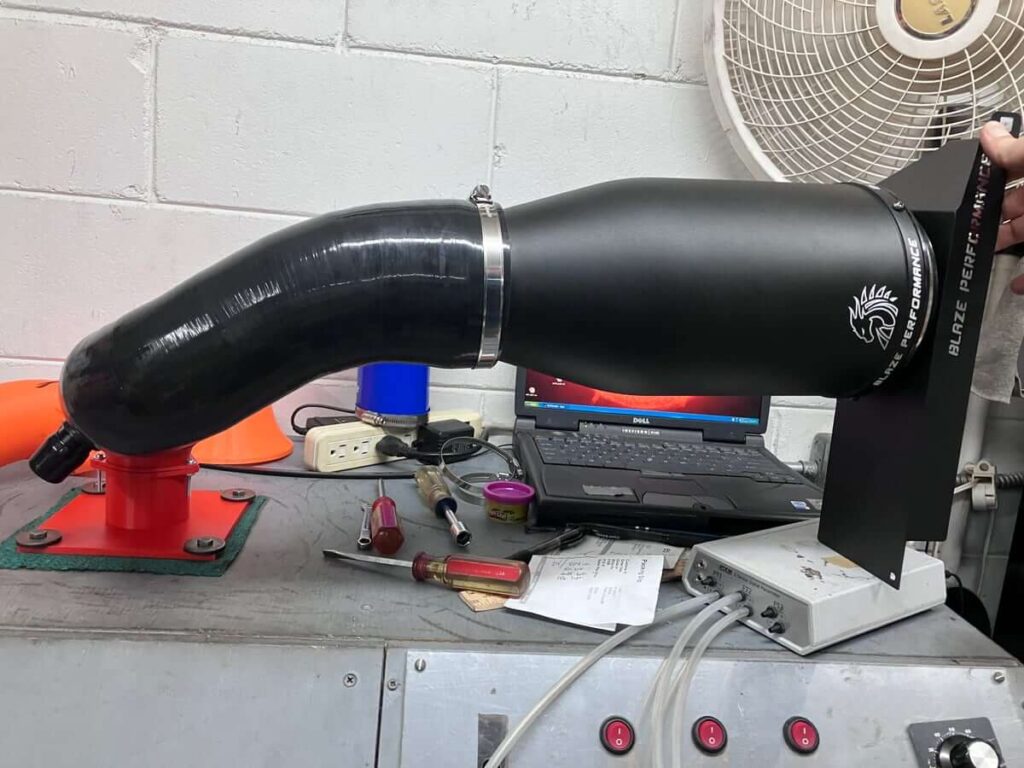
The Blaze ATOM Race flows 527 CFM @ 28″ of H2O.
This is very similar to the Racingline flow rate, with the Blaze down just under 2% compared with the Racingline. It is unlikely that this small difference would be noticed in the car.
CTS elbow:
The main difference between the Brett Harrison scenario and what was shown above is that Brett used a CTS Turbo inlet elbow with the Racingline intake, not an appropriately sized elbow as was used in this flow test.
The CTS elbow is designed for use with a stock turbo with a 49 mm compressor inlet, not the 60 mm Mabotech turbo. Additionally, the elbow’s inlet is sized to fit on the stock accordion hose.
The image below shows that the “modified” 60 mm Blaze flange is larger than the CTS turbo elbow outlet. The “modified” Blaze adapter has 37% more cross-sectional area than the CTS elbow.
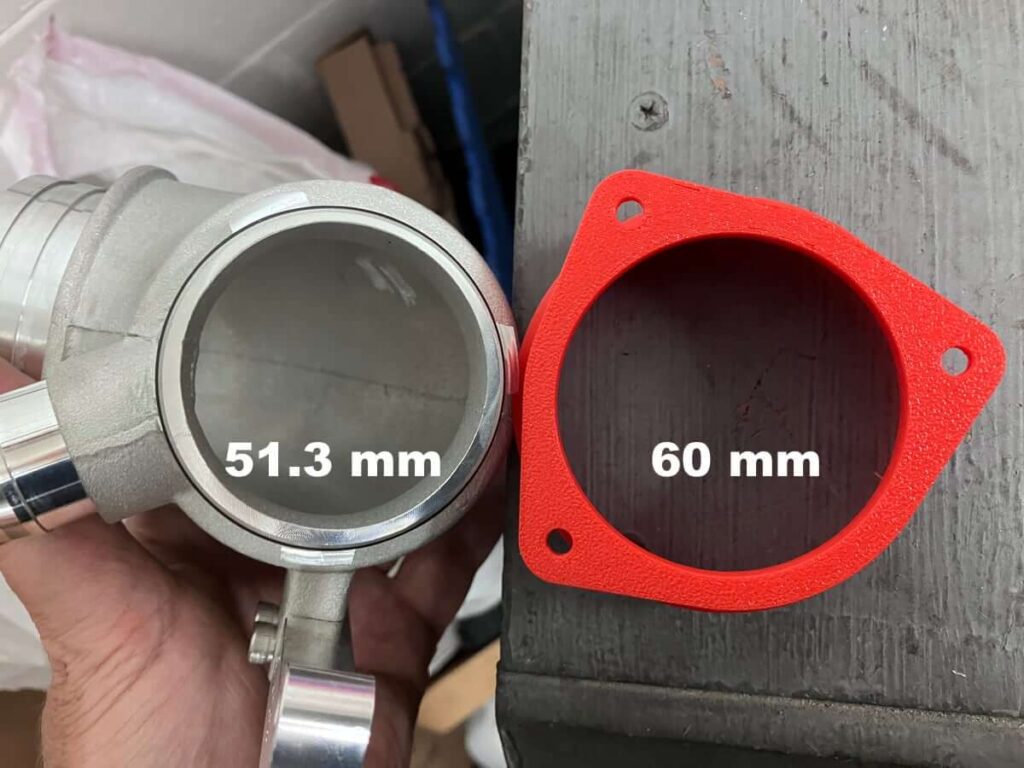
CTS elbow outlet inside Blaze “modified” turbo flange.

Putting the Racingline R600 and CTS turbo inlet elbow up against the Blaze ATOM Race with the “modified” 60 mm Blaze flange is what Brett Harrison compared.
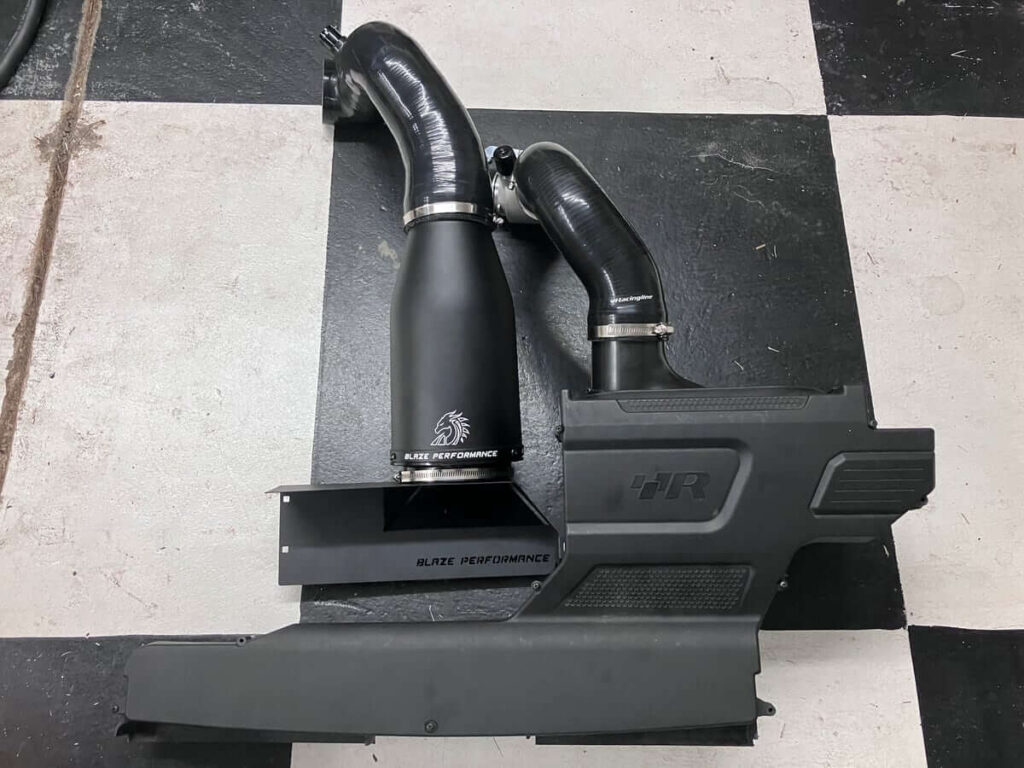
When the R600 is connected using the CTS TIP, the intake flows 460 CFM @ 28″ of H2O, which is approximately a 17% decrease in airflow.
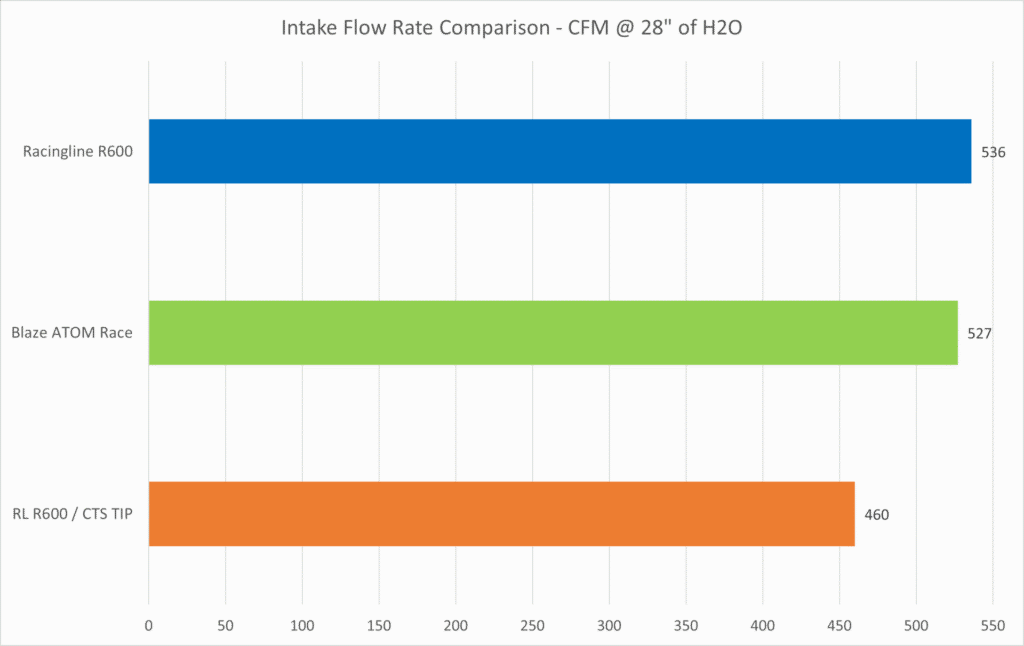
These results are consistent with street tests I conducted a few weeks ago, where I used the R600 with an MST hybrid TIP and Epman (APR clone) stock-size TIP:
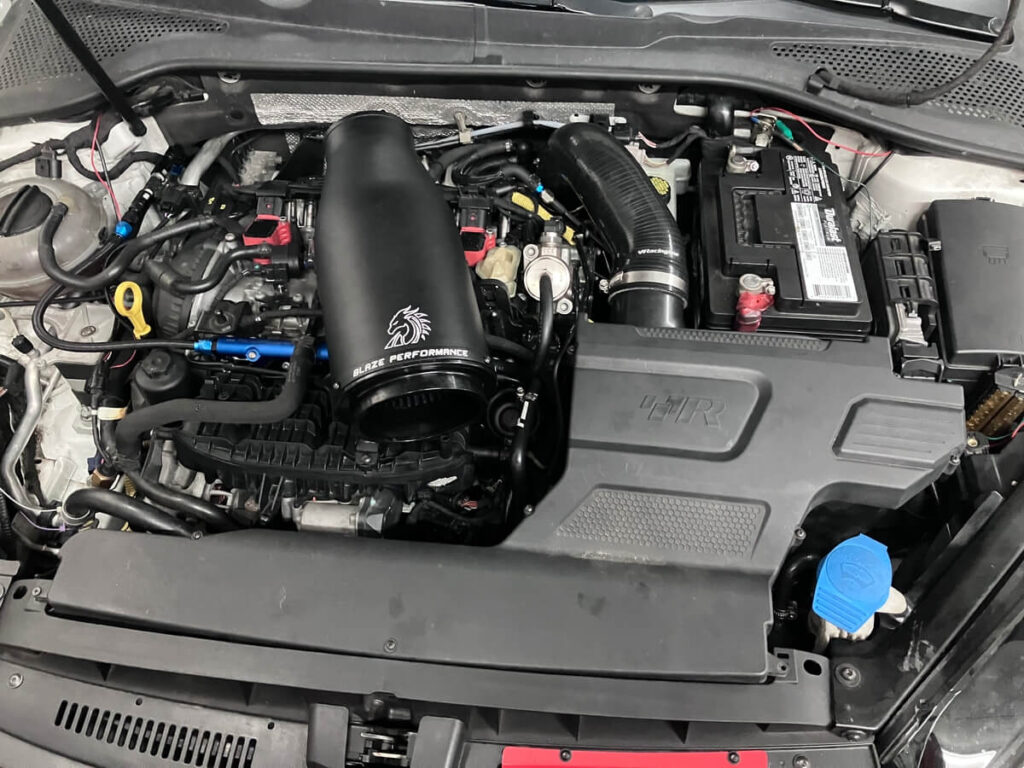
The results were as expected, with the stock-size elbow causing the turbocharger to work harder than the hybrid-size elbow.
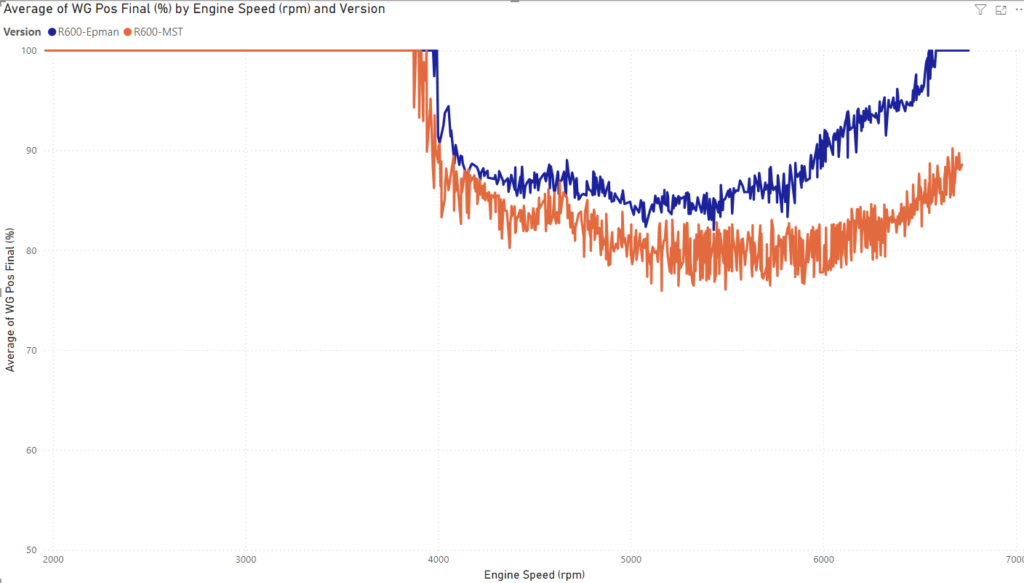
Unfortunately for consumers, Blaze Performance promoted Brett’s incorrect conclusion, and misinformation about this intake is still the norm today.
Three-inch adapter tests:
The next round of tests was with a 3″ adapter.
For this, the Blaze ATOM is attached directly to the flow bench adapter, and the Racingline is attached to a 3″ TIP using the do88 inlet hose. A modified stock GTI intake is also tested without the intake duct. The stock intake has a Mann filter, and the snow grate has been removed. It is also attached to the 3″ TIP using the do88 inlet hose.
The modified stock intake flows 518 CFM @ 20″ of H2O.
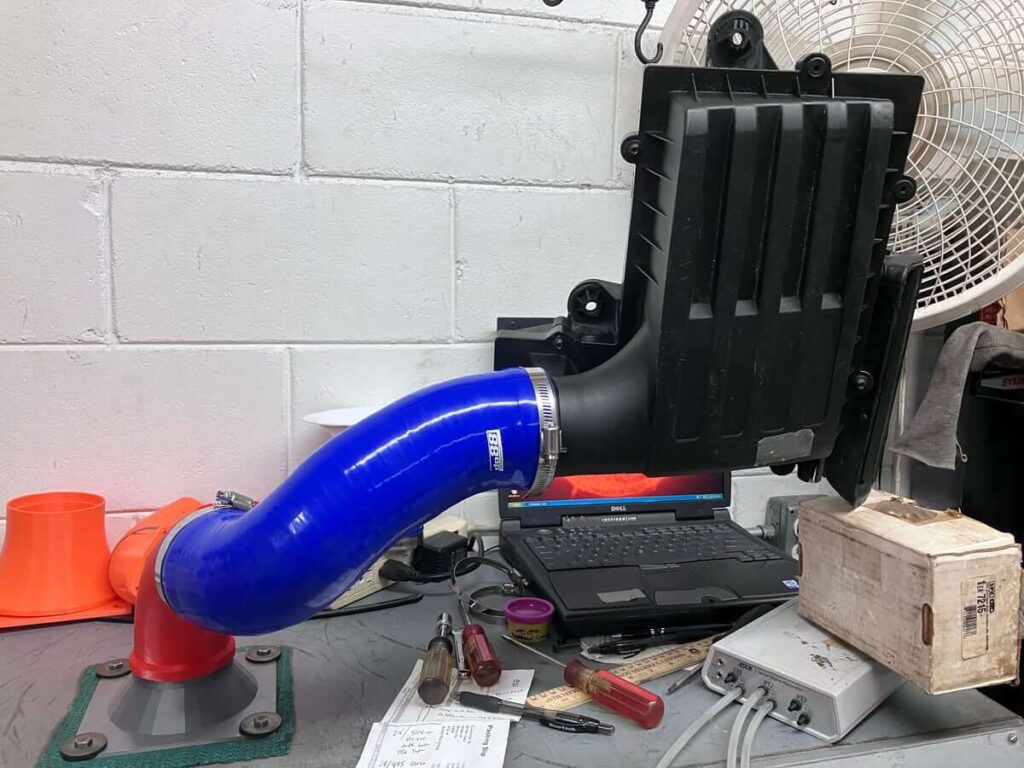
The Racingline intake flows 536 CFM @ 20″ of H2O, and the Blaze ATOM Race flows 474 CFM @ 20″ of H2O.
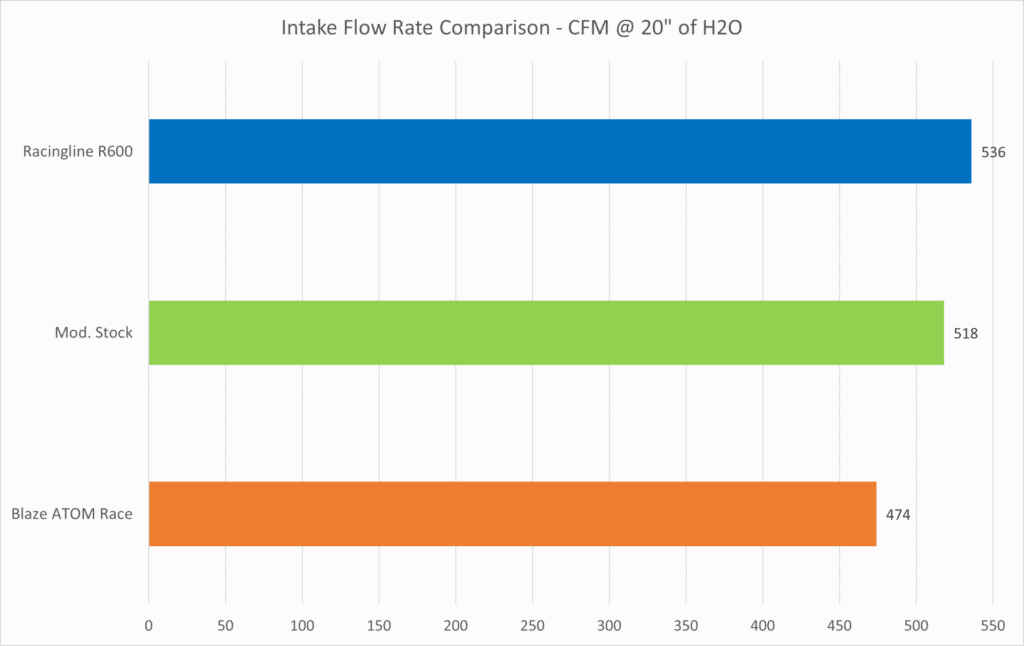
One more test was made with a 3.5″ inlet elbow that tapered more gradually until just before entering the compressor inlet.
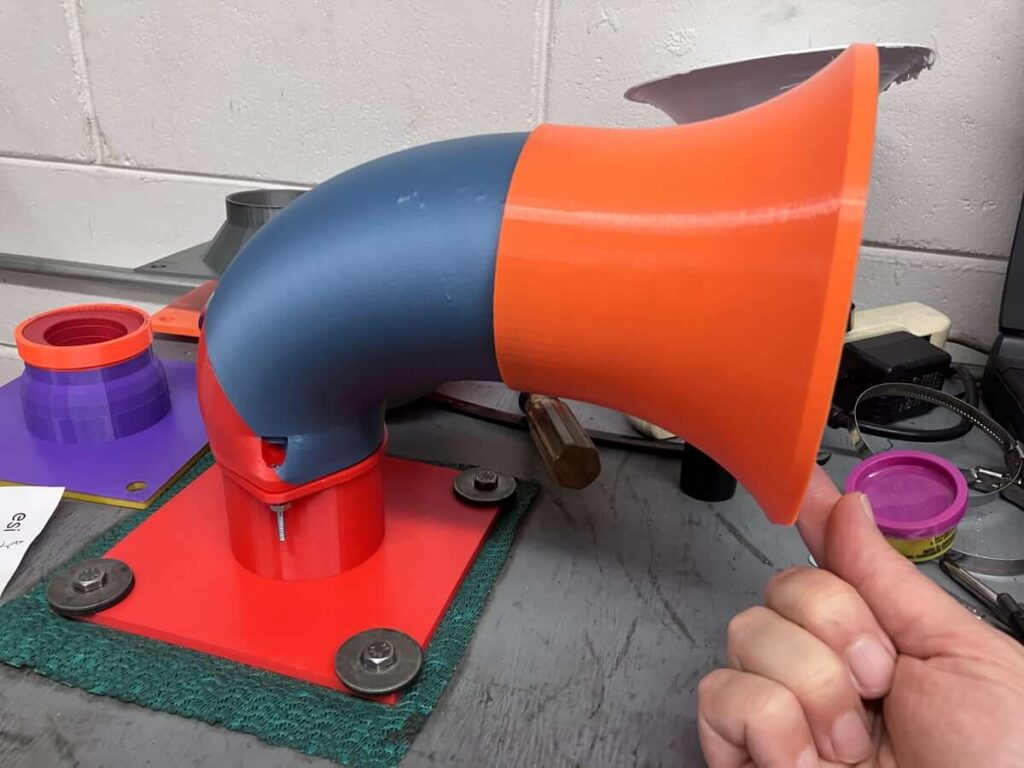
This variation flows 519 CFM @ 20″ of H2O.
